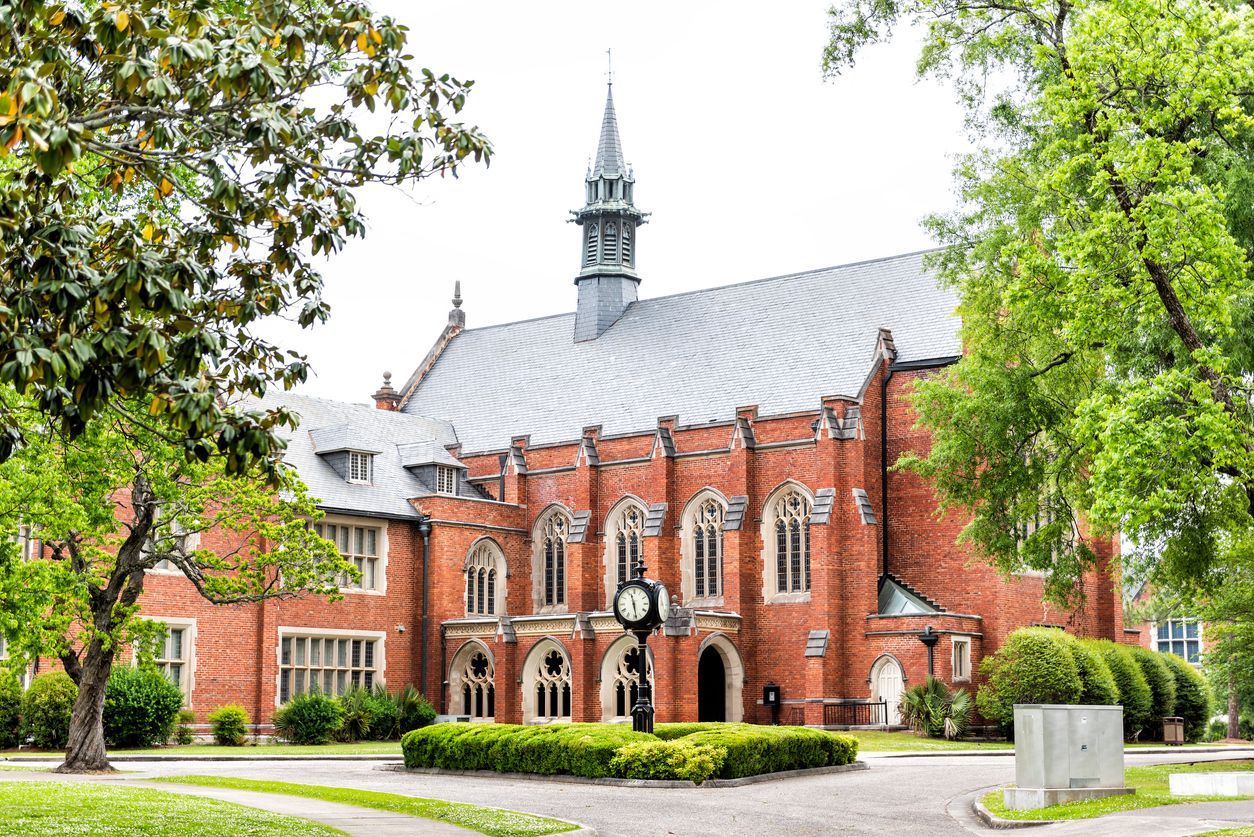This page is licensed under Creative Commons under Attribution 4.0 International. Anyone can share content from this page, with attribution and link to College MatchPoint requested.
What Students & Parents Need to Know about the 2025 College Admission Results
7 Trends from the "Craziest College Admissions Season Ever"
The 2025 college admissions results are in—and they confirm what many families have felt building for years: the path to college is more competitive, more complex, and less predictable than ever. From record-breaking application totals to ultra-selective majors and shrinking admit rates at once-accessible schools, this cycle marks a significant shift. Southern universities surged in popularity, Early Decision filled more than half of many incoming classes, and top majors like business and computer science became harder to access than some Ivy League programs. Even strong students saw surprising outcomes as institutional priorities—like major alignment, geography, gender balance, and ability to pay—quietly influenced final decisions. At Pomona College, for instance, the male admit rate was 8%, compared to just 6% for female applicants. What’s clear: getting into college now requires more than great grades and test scores—it takes a well-planned, personalized strategy. That starts with understanding the key takeaways from this year’s cycle and shifting the focus toward what students can do. With the right approach, students can build thoughtful college lists, tell authentic stories, and find schools where they will not just get in—but truly thrive.
TREND #1
Continued Application Inflation Fueled by Test-Optional Policies & Larger College Lists.
The number of college applications increased by 6% this year, continuing a 32% increase since 2020, largely due to the widespread adoption of test-optional admissions policies. This increase was also driven by a 13% increase in applications from international students. Most students chose to apply test-optional this year, with only 43% of applicants submitting test scores compared to 74% pre-pandemic. The Common App reported that the average college list size has increased by 30% over the last 5 years, with the growth coming primarily in the number of reach schools. This surge has intensified competition, benefiting colleges with broader applicant pools but making it harder for students to stand out. With this continued rise in applications, colleges are using analytical tools to evaluate students, looking at factors like school rigor, neighborhood adversity, and family background.
Takeaways For Students:
- Create a balanced list of reach, possible, and match schools that align with your academic and personal goals
- Assess your chances of admission based on factors like GPA, test scores (if applicable), and extracurricular profile
- Attend virtual or in-person info sessions, campus tours, and college fairs to learn more about each school
- Connect with admissions officers, current students, and alumni to gain insights and demonstrate your interest
- Submit your applications well before the deadlines to avoid last-minute stress and ensure your materials are received on time
TREND #2
The Hardest Hit Were the Most Selective Schools.
The so-called Ivy-Plus schools — the eight members of the Ivy League plus M.I.T., Duke, Chicago and Stanford — collectively received about 175,000 applications in 2002. This year, they got more than 590,000, with only a few thousand more available spots. As a result, gaining admission to these highly competitive schools became even more challenging this year, with acceptance rates falling below 5% at Stanford, Duke, MIT, and Yale. In fact, a record 17 colleges now have admit rates below 10%, including USC, Williams, and Barnard, which dropped below that threshold during the pandemic. Perfect grades and test scores are no longer sufficient at these highly selective institutions that are receiving more applications than ever before. Even strong applicants need a compelling application that aligns with institutional priorities.
Takeaways For Students:
- Develop a testing plan, as many of these schools shift their test-optional policies
- Don't rely solely on ultraselective schools; ensure your list includes possible and match schools
- Seek out opportunities to make a difference in your community or beyond
- Consider applying Early Decision to signal strong interest and improve admissions chances
- Tailor your application to each school, highlighting how your experiences and goals align with their offerings and values
Watch our webinar
Deep Dive of the 2024 College Admissions Cycle Results
TREND #3
State Flagships & Public Ivies Became Even More Selective.
Increases in both in-state and out-of-state applicants have intensified competition at top public universities. Institutions like UCLA, which saw a 30% increase in applications over the last 3 years, and now boasts an acceptance rate of just 8.6%, rivaling the Ivies. Other state flagships like Georgia Tech and the University of Virginia have also experienced significant drops in admit rates, falling to 16% and 20%, respectively. The University of Texas at Austin, which received 17% more applications over the last two years, now admits only 11% of non-auto admit students, a sharp decline from 30% just five years ago. Even for in-state students, strong grades and test scores are no longer sufficient at these flagship public universities, as the average weighted GPA for admitted students at many of these top public schools now surpasses 4.25. In fact, a recent study found that the average SAT score for admitted students at flagship state universities has increased by 50 points over the past decade, highlighting the growing competitiveness of these institutions.
Takeaways For Students:
- Develop a consistent record of academic achievement (including IB and/or AP classes), showing growth and resilience throughout your high school career
- Engage in extracurricular activities that align with your intended major, demonstrating passion and commitment through leadership roles and long-term involvement
- Research and visit a variety of public universities, attending info sessions, connecting with admissions officers, and exploring departmental offerings
- Craft compelling essays that highlight your unique experiences, personal growth, and potential contributions to the campus community, especially as they relate to your academic interests
- Apply strategically to a balanced list of reach, possible, and match schools, including a mix of in-state and out-of-state options, to maximize your chances of admission and find the best fit for your goals
TREND #4
Growing Competition for Selective Majors.
This year saw a marked increase in applications to impacted majors like computer science, engineering, business, and nursing. Computer science, in particular, has seen an explosion in popularity, with the number of undergraduate computing majors more than tripling since 2011. As a result, the admission rates for computer science programs at top schools have plummeted, with both UC Berkeley and the University of Washington admitting 2% of applicants this year. Even at schools with relatively high overall acceptance rates, these majors have become ultracompetitive, with some admitting less than 10% of applicants. The competition is so fierce that some schools have introduced separate application evaluation criteria for students applying for these highly selective majors. With grade and testing benchmarks higher than ever, colleges give more weight to activities illustrating commitment, leadership, and authenticity. Admissions officers want to see dedication, not dabbling, and a strong thematic thread connecting activities to academic interests.
Takeaways For Students:
- Participate in clubs, competitions, internships, or research opportunities that align with your intended major to demonstrate your initiative and impact
- Excel in prerequisite courses related to your intended major, such as math and science for STEM fields or business and economics for business programs
- Pursue advanced coursework, such as AP, IB, or dual enrollment classes, to showcase your academic readiness and commitment to your chosen field
- Consider acceptance rates by major, not just overall rates, for your target schools
- Identify alternative majors or related fields of study that align with your interests and strengths, and consider applying to schools with strong programs in those areas
TREND #5
The Rise of Southern Schools on a National Stage.
Southern colleges and universities have become a lot more popular in recent years. Since 2019, applications to these schools have increased by an impressive 42%, a growth rate much higher than schools in the Mid-Atlantic and New England regions. The trend is even more dramatic at public Southern colleges, where applications have surged by a remarkable 62%. The appeal of Southern schools now reaches far beyond the South itself. The past 4 years have seen an unprecedented number of students from the Northeast applying to schools in the South. For example, at Clemson University in 2023, 20% of the total student body came from New York and New Jersey. Back in 2017, the top out-of-state students were from neighboring Southern states like Georgia and North Carolina.
Takeaways For Students:
- Consider Southern schools that offer strong scholarship and financial aid opportunities.
- Be aware that the growing appeal of Southern colleges may lead to decreasing acceptance rates and an increasingly diverse student body.
- Evaluate the potential advantages of attending a Southern institution, such as lower cost of living, unique cultural experiences, and access to thriving job markets in the region.
- Ensure that the academic offerings, research prospects, and extracurricular activities at the Southern schools you're considering align well with your intended field of study and personal interests.
- When exploring colleges with successful sports programs, look at the overall campus environment and breadth of extracurricular options beyond athletics.
- Demonstrate your interest in these schools through campus visits and writing supplemental essays keyed to the school.
TREND #6
Academic & Extracurricular Engagement Took Center Stage.
As application numbers continue to surge, colleges are emphasizing the depth and authenticity of students' extracurricular engagement. Admissions officers seek sustained commitment and leadership in a few key areas, rather than a scattered involvement across numerous activities. This approach allows them to identify applicants who are genuinely passionate about their interests and have made a meaningful impact. Colleges want to see a clear connection between students' extracurricular pursuits and their intended academic majors or future goals. By prioritizing depth over breadth, institutions aim to cultivate a student body with focused interests and the drive to excel in their chosen fields.
Takeaways For Students:
- Immerse yourself deeply in a core of extracurricular activities that align with your academic interests and long-term aspirations.
- Seek leadership roles or initiate projects that demonstrate your ability to make a tangible impact within your areas of involvement.
- Highlight your growth, accomplishments, and the skills you've developed through your sustained extracurricular engagement in your application materials.
- Reflect on how your extracurricular experiences have shaped your perspectives, values, and future goals, and articulate these connections compellingly.
- Be prepared to discuss your extracurricular journey, including challenges overcome and lessons learned, during interviews or supplemental essays.
We have a unique approach at College MatchPoint. It all begins and ends with our ultimate goal: for our students to thrive in their selected college.
The college application process can feel overwhelming, no matter how strong the student. But at College MatchPoint, we believe it should be organized, personal, and even fun, and we provide a framework that reduces the stress throughout the journey.
TREND #7
The Rise of AI in College Admissions.
The use of artificial intelligence (AI) in the college admissions process has been a growing trend this year. According to the search results, around 50% of college admissions departments are now using AI to streamline various aspects of the application review, such as evaluating transcripts, letters of recommendation, and communicating with applicants. This has allowed admissions offices, especially at larger institutions, to handle the influx of applications more efficiently. Some schools have been experimenting with AI tools to automate the initial screening of applications by processing data from documents like transcripts and standardized test scores, creating a base academic profile for each applicant. At the same time, students have also started leveraging AI tools like ChatGPT or Claude to assist with their application essays. Estimates suggest that around 13% of students used AI to help craft their essays this admissions cycle. This has raised concerns among college counselors about the authenticity of student writing and the potential for AI to be misused.
Takeaways For Students:
- Use AI responsibly as a tool to brainstorm and refine ideas, but do not let it replace your own authentic writing.
- Be aware that colleges are becoming more savvy to the use of AI in essays and are looking for genuine, student-written content.
- Understand that your application may be screened or evaluated in part by AI algorithms, so focus on presenting your best self through all aspects of your application.
- Communicate openly with your college counselors about your use of AI tools, as they can provide guidance on how to leverage these technologies effectively.
Given these trends, students at various stages of their high school journey should prioritize different aspects of their college preparation. Rising seniors should focus on crafting compelling applications that highlight their unique experiences, academic achievements, and extracurricular passions, while also ensuring they have a balanced college list that includes a mix of reach, possible, and match schools. Rising juniors should concentrate on maintaining strong grades, exploring potential majors and careers, and seeking out meaningful extracurricular experiences that align with their interests. For rising sophomores, the emphasis should be on developing strong study habits, challenging themselves academically, and starting to explore their passions through clubs, volunteering, or other activities. Students just starting high school should prioritize building a solid foundation by focusing on their grades, getting involved in extracurricular activities, and beginning to explore their interests and potential career paths. By staying informed about admissions trends and focusing on these priorities, students at each stage of their high school journey can position themselves for success in the increasingly competitive college admissions landscape.















